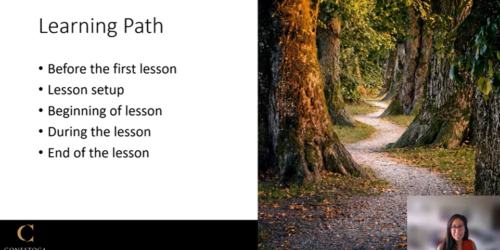What Does it Mean to be an Intercultural Educator?
Diversity is a fact of life in any Canadian postsecondary setting. In addition to diversity in such areas as age, gender, and educational background, Conestoga students embody rich cultural and linguistic diversity, whether they are domestic or international. Supporting a diverse student population at Conestoga across various disciplines is a continuous learning opportunity for both new and seasoned faculty. Being an intercultural educator involves a multifaceted approach that goes beyond traditional teaching to maintain the engagement of students, foster a welcoming environment and support students both in the classroom and beyond. This post will define intercultural education and describe ways of supporting diverse learners in your classroom.
What is Intercultural Education?
According to UNESCO, intercultural education should respect “the cultural identity of the learning through the provision of culturally appropriate and responsive quality education for all, provide “every learner with the cultural knowledge, attitudes and skills necessary to achieve active and full participation in society” and provide “all learners with cultural knowledge, attitudes and skills that enable them to contribute to respect, understanding and solidarity among individuals, ethnic, social, cultural and religious groups and nations” (UNESCO, 2006).
How Do We Apply Intercultural Teaching in the Classroom?
Intercultural competence in higher education involves the ability to interact effectively and respectfully with students from diverse cultural backgrounds (Dimitrov & Haque, 2016). It is characterized by specific behaviors, attitudes, and skills that promote an inclusive and dynamic learning environment. In our most recent workshop series of Introduction to Teaching International Students, participants within the workshop brainstormed several ways we could further our journey as intercultural educators:
- Create respectful and open communication: Communicate with empathy and sensitivity about cultural differences or miscommunications that arise. Set clear communication expectations from the beginning of the course with student input. Model active listening and allow for diverse voices to be heard and valued. Try to handle disagreements constructively, with a focus on understanding different perspectives rather than winning arguments. Speak to students individually where needed and send reminders of agreed communication practices via email and/or course announcements.
- Employ inclusive course materials and resources: Where possible, choose or integrate course materials that include diverse perspectives, authors, and case studies from various cultures. Encourage students to explore and reflect on different cultural viewpoints in assignments and discussions where applicable that align with course learning outcomes and/or essential employability skills. Consider using culturally relevant examples and metaphors to explain concepts and invite students to offer their own examples.
- Reflective and Critical Thinking: Reflect critically on your cultural assumptions and biases and invite your students to do the same. Critical thinking exercises involve analyzing cultural contexts and questioning stereotypes. Consider modelling reflective practices by sharing your own cultural learning experiences.
- Collaborative Learning Environment: Foster a respectful and well scaffolded environment. If group work is part of your course, encourage collaboration among students from diverse backgrounds. Start with smaller groups in using formative assessment activities moving into summative assessments with clear guidelines and group communication practices.
- Grow as an Intercultural Educator: Continue to grow as an intercultural educator by seeking out opportunities to further your knowledge and understanding of intercultural communication. Consider participating in a community of practice at the college, a workshop, or micro-credential course that focuses on student diversity. Continue to be patient and practice compassionate pedagogy.
As intercultural educators, applying these principles will assist us in getting to know our students, creating a welcoming environment, and becoming sensitive, compassionate, and responsive educators of our diverse student population. These ideas and perspectives generated from our workshop series have the potential to elevate not only the student experience but the knowledge, skills, and attitudes of all students including domestic and international students from diverse cultural and linguistic backgrounds.
References:
Brillinger, K. (2023). 10 (+1) Tips for Supporting International Students (and Everyone Else) While Teaching Online https://tlconestoga.ca/101-tips-for-supporting-international-students-and-everyone-else-while-teaching-remotely/
Dimitrov, N. & Haque, A. (2016). Intercultural Teaching Competence in the Disciplines. In Pérez, G. M. G. & Rojas-Primus, C. (Eds.) Promoting Intercultural Communication Competencies in Higher Education. (pp. 89-119). IGI Global: Hershey, PA. https://ir.lib.uwo.ca/ctlpub/16/
Kafashan, S., & Sultana, N. (2023). The Success of International Students at Conestoga College https://tlconestoga.ca/the-success-of-international-students-at-conestoga-college/
Promoting Attendance with International Students: https://tlconestoga.ca/promoting-attendance-with-international-students/
UNESCO. (2006). UNESCO guidelines on intercultural education. https://unesdoc.unesco.org/ark:/48223/pf0000147878



